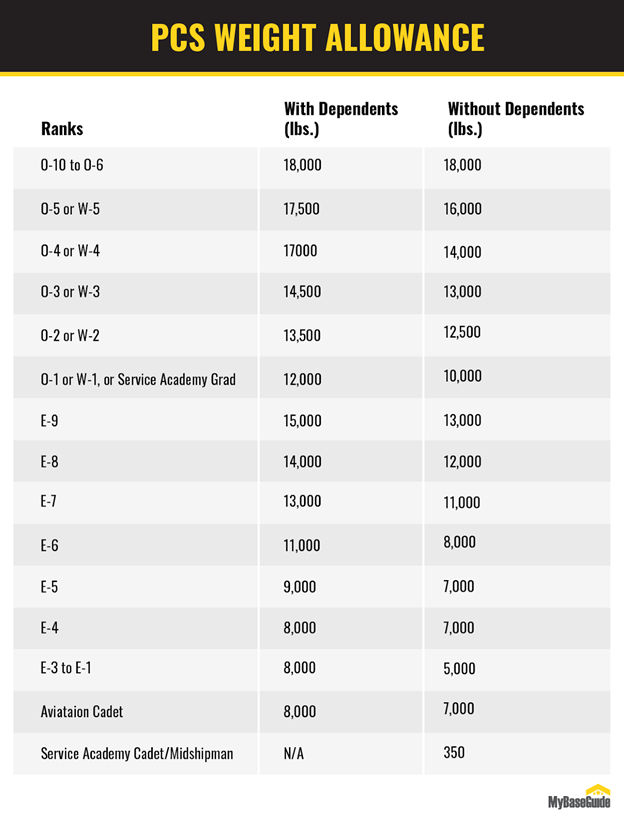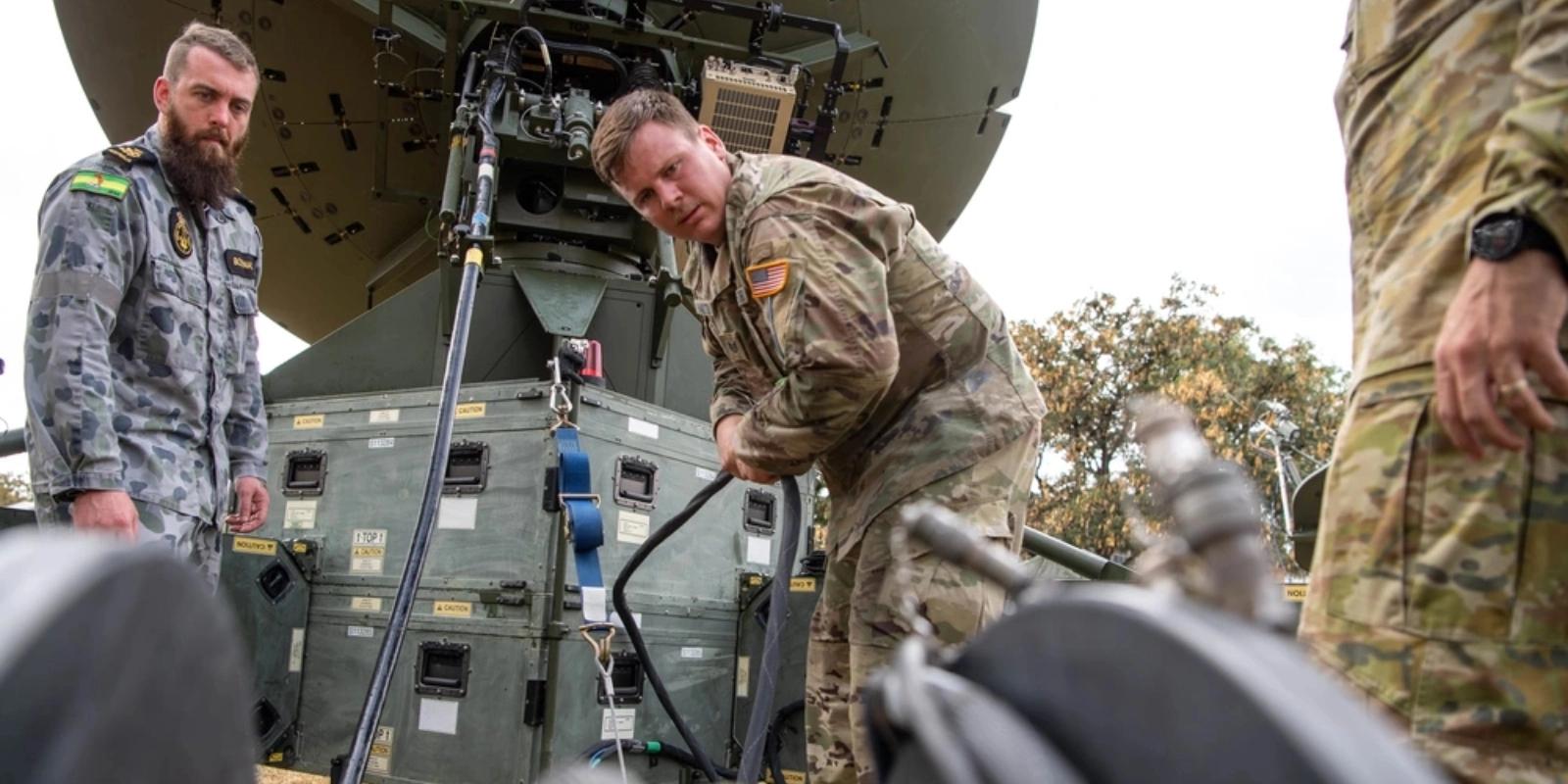MILITARY MOVING EXPENSES - HOW TO BUDGET WHEN PCSING

PCSing is far from easy. Alongside physically prepping what’s essentially your entire life for a move across the country - or farther - you also have to make sure that you have the funds to move everything correctly, safely, and in a timely manner. That’s where a PCS budget becomes essential. Whether this is your first time dealing with military moving expenses or you’re a seasoned pro, our guide will help you prepare financially for a smooth transition.
Disclaimer: Here at MyBaseGuide, we’re proud to be a resource for the military community. Our tips, tricks, and tools for budgeting your PCS can help you deal with the moving expenses for military families, however, it’s important to remember that financial advice should come from a licensed advisor. This guide is simply a resource to aid in your journey.
Suggested read: House Promises Troops a 15% Junior Enlisted Pay Raise In 2024
Military Moving Expenses - PCS Budget Planning
Whether planning is your bread and butter or the bane of your existence, PCSing requires great planning. Dealing with military moving expenses can get complicated quickly and spreadsheets can go a long way in making the PCS process a lot smoother.
Planning ahead before you officially begin your move will also help you understand exactly how you need to set up your PCS budget.
Preparing helps you visualize the various military moving expenses you’ll need to pay for and how much you can expect to receive from the government to complete your PCS.
Budgeting for a move is all about planning! To help you get started, here are a few common moving expenses for the military you can expect, along with allowances you’ll receive to help you cover your costs:
Common Moving Expenses for Military Families
When undergoing a permanent change of station, there are many expenses families may face. Here are some common examples:
- Furniture may be an expense
- Household goods and personal property
- Lodging
- Meals
- Packing materials (boxes, packing tape, etc.)
- Storage costs
- The cost of shipping your pet(s)
- The cost of shipping your vehicle
- Traveling expenses
In the end, every move is different and the costs you may experience will vary. Vehicles need maintenance, there are miscellaneous things even once you get settled—the list goes on and on.
Design your PCSing budget to meet your needs while also accounting for emergencies, unexpected expenditures, and the costs associated with your move once you’ve made it to your new destination.
Does the Military Pay for Moving Expenses?
Depending on the cost, some military moving expenses reimbursement is available. However, not all expenses are covered and instead, fall on the shoulders of service members and their families.
To stay prepared, it’s important to understand which military moving expenses your family can receive help with. Below are the allowances available to military families undergoing a PCS:
Military Moving Allowance
Your military moving allowance isn’t a one-and-done kind of deal. The military will provide you with funds, advancements, and reimbursements for several aspects related to your military move.
Military families can count these items when you start your PCS budget. You can learn more about your moving allowance, also known as PCS entitlements, on our PCS military guide.
To access ALL the correct forms and documents for each allowance type on the Defense Finance and Accounting Service (DFAS) website here. There are two separate portals to make receiving your military moving allowance easier than ever.
Per Diem Military Moving Allowance
Your per diem allowance is what the military pays you for food, lodging, and travel expenses as you go from one installation to the next. This includes covering the cost of dependents who are moving with you.
In Fiscal Year 2024, your per diem military moving allowance rate is a total of $171 per day. Here’s how this breaks down:
- $107 per day for lodging costs
- $59 per day for the cost of meals
- $5 per day to cover incidentals
Keep in mind your allowances will vary depending on where your PCS is taking place. Also, if you spend less than your per diem, for example, you stay at a hotel that’s only $100 for the night, don’t expect to receive the extra $7.
For OCONUS moves and to see the most accurate rates in your area, visit the Defense Travel Management Office website.
If you have dependents, you can also expect to receive per diem for them (but at a reduced rate from what you and your spouse receive).
If your child or dependent over the age of 12 is traveling with you, you have an allowance of up to 75% of your per diem rate for them. Those under the age of 12 will qualify for up to 50% per diem.
Monetary Allowance in Lieu of Transportation (MALT)
You can receive MALT money for each mile you traveled to your new installation per the official distance between your old and new postings.
This is available for anyone using a POV, or privately-owned vehicle, to move. If you want to receive MALT money to cover your military moving expenses mileage, you need to pay attention to your odometer.
Write down how many miles you were at before you started your trip and how many miles you’re at once you arrive at your new installation. This Joint Travel Regulations (JTR) document (page 180) has more in-depth information on your MALT.
Covering Lodging Expenses
If you have to stay at temporary lodging as a result of a PCS move, the Temporary Lodging Expense (TLE) can pay you for the cost of your stay in addition to the meals you eat while you’re there.
TLE has a limit of 14 days for continental PCS and caps out at $290 per day. To receive your TLE, you’ll need to fill out this form and submit it to your Paying Office. You can learn more about TLE in our guide.
Dislocation Allowance (DLA)
Dislocation Allowance is pretty much what it sounds like. Its purpose is to reimburse military members for any costs related to relocating you or your household during your PCS.
However, you cannot receive DLA under the following conditions:
- This is your first time PCSing, and you DON’T have dependents.
- You’ve been ordered to Active Duty, and you DON’T have dependents.
- Your travel is based on separation or retirement from the military.
- You already received DLA in this fiscal year.
You may be eligible for partial DLA if you’ve been ordered to vacate or occupy family quarters at the convenience of the government.
The JTR can provide you with more information regarding your DLA. You can find the current DLA rates here.
Personally Procured Move (PPM) Allowance
If you decide to go in alone and move all by yourself, you will still receive assistance from the military. The PPM or DITY/ Do-It-Yourself move allowance will reimburse you for the most common operating expenses related to your PCS.
Let’s look at authorized and unauthorized PPM expenses. Items that are NOT eligible for reimbursement:
- Safe Move Insurance
- Full purchase of dollies or auto transporter
- Additional drivers
- Totes or storage bins
- Oil changes
- Meals & lodging
- Routine maintenance
- Sales taxes
- Tire chains
- Storage
- Hitching and tow bars
Items that ARE eligible for reimbursement through your PPM allowance:
- Rental trucks
- Rental of dollies or auto transporter
- Road tolls
- Packing material
- PODS
- Gas
- Boxes & tape
- Furniture pads
Related read: Addiction In the Military and Civilians - Signs and Treatment
PCS Weight Allowance
Depending on your personnel status/rank, the JTR has outlined specific weight limits for your household goods.
Your PCS weight allowance is how much weight you are allowed to ship when moving for your move.
There will also be slight differentiation based on whether you have dependents or not, in which case the PCS weight allowance will usually be slightly increased. You can learn more about these numbers on page 268 of the DoD’s JTR.

Are Military Moving Expenses Tax-Deductible?
Active duty military personnel and, in some cases, their unaccompanied family members, can deduct military moving expenses associated with PCS orders.
The military moving expenses tax deduction applies to various situations, such as relocating to a first duty station, transferring between permanent duty stations, and moving upon separation or retirement from military service.
Your move must occur within a specified timeframe, typically within one year of ending active duty or as permitted by the JTR. Eligible expenses can include household goods, personal effects, storage, and travel expenses to the new residence.
It’s worth noting that you can’t receive a military moving expenses reimbursement for meal costs nor any expenses reimbursed by the government.
If you’re looking for more information about your tax-deductible moving expenses for the military, you can find what you need on page 12 of Publication 3, the Armed Forces’ Tax Guide, from the IRS.
When it comes to reporting moving expenses, there are a lot of different scenarios and forms necessary. You can click the link to find the right IRS forms for your needs.
Furthermore, the IRS has an interactive interview tool that asks you a series of questions to determine whether or not a military moving expense tax deduction is available for your costs. This process takes an estimated nine minutes to complete.
How to Budget Military Moving Expenses
Before you get into it, budgeting can seem overwhelming. There’s an abundance of military moving expenses you have to take into consideration and work into your calculations.
A PCS budget can seem even worse with all these allowances and limits you have to worry about, but making your budget is simply a matter of diligent calculations and good planning.
When you know everything you’re going to have to pay for, it becomes easier to alter your lifestyle to account for that in the months leading up to your PCS. Here’s how to budget your military moving expenses:
1. Calculate All Moving Expenses
You’re going to want to make a military moving expenses checklist. You may think that a checklist will only get you down, but this is an important first step that will create the framework for the rest of your PCS budget.
Your military moving expenses will be different depending on whether you’re embarking on a DITY/PPM move or if you’re letting the military take care of some of the hassles.
If you’re doing it alone, you’ll have to set up arrangements for rental trucks as soon as possible. Check the rates for rental services in your area before deciding on which one you’re going to go with.
Add in the expected cost of gas, food, and lodging during your trip. If you’re having movers handle your stuff, check with all the local moving companies in your area. Ask them about their rates and let them know when you’re planning to move.
Don’t forget to reach out to your Personal Property Processing Office (PPPO) well before your move begins to get all your paperwork in order and properly prepare your household goods for shipment with the military.
For each expense that’s NOT set in stone, write down the highest possible price
for that item. For example, if you were quoted between $100 and $400 for a moving expense, mark it down as $400, so that you’re prepared for the most expensive option.
2. Consider Travel Insurance
Travel insurance can cover a whole host of unfortunate and unforeseen events related to your PCS move. We know it seems like another useless expense, but there are many benefits.
It can help you cover the costs of lost baggage, delayed or missed flights, or accidents en route. If you’re looking for a place to start, Travel Guard is highly recommended for military members and their families.
3. Account for Storage Costs
You don’t have time to visit open houses halfway across the country when you get your PCS orders and you might get to your new installation to find that you don't have quite as much room for all your things as you really need.
That’s why you should take storage into account before moving. Storage can also be good for larger pieces of furniture or other household items that you don’t feel like moving in immediately once you get there.
Keeping a storage unit under your name can also make your next PCS smoother, as you can start packing and moving household items into the storage unit way before you move. This will cut down on the clutter and chaos leading up to your next PCS.
4. Purchase Reusable Packing Materials
This likely isn't your last PCS. If you want to make things easier on yourself when you go to move next time, consider investing in reusable packing solutions. It may cost you more upfront, but after your third, fourth, or fifth PCS, you’ll be saving in the long run.
If you’re doing a PPM/DITY, you may be eligible to receive reimbursement for your packing materials!
5. Keep Track of All Your Receipts & Bills
Make a place in your home dedicated to all of your monthly bills and receipts. At the end of the month, you can use these to calculate average expenses and plan the next month accordingly. This will also come in handy in case you need to dispute a charge.
6. Open a Separate Bank Account
Military moving expenses aren’t cheap, nor are they simple. An easy budgeting solution is to open a separate account solely for PCS expenses.
This keeps all your important financial information related to your PCS in one convenient place and away from everything else in your personal account.
7. Split Up Your Direct Deposit
When you get paid each cycle, your money probably goes directly into your bank account. At many banks, you usually have the option to split your direct deposit between banks or checking vs savings accounts.
If you have a dedicated place for your money going towards military moving expenses, you may want to think about splitting your paycheck and contributing some to your PCS budget.
8. Cut Costs Leading Up to Your PCS
It can be hard to cut expenses, but your budget will benefit from a “no-spend” day or two. Between each paycheck, once a week, once a month, or whatever interval works for you, set aside one or multiple days where your aim is simply to spend NOTHING.
Additionally, in the modern era, subscription services to Hulu, Amazon, Netflix, Spotify, Game Pass, etc., could have you spending a lot more than you realize.
Get real about how much you actually use each service and make cuts accordingly. The extra cash can help you cover military moving expenses. Plus, you can resubscribe once you’re settled in your new home.
9. Use Cash Where You Can
We all know how easy it is to swipe your card and go. That’s why it’s so dangerous. Using cash in your hand can make it a little harder for you to let it go. For some people, this helps save by making them more conscious of their spending habits.
Use Online Budgeting Tools and Track Milestones to Cover Moving Expenses for Military
The Internet offers hundreds of tools, programs, and software dedicated to helping you plan out a budget. Thanks to our guide, you know what military moving expenses you’ll need to cover from the info above.
Be sure to set up realistic goals all along the way to encourage you to keep saving. You can even set aside (a small amount of) reward money for yourself at each milestone as a celebration for reaching your goal
Below are a range of money management websites and other tools that are must-haves for someone who’s creating a PCS budget to help alleviate some of the stress. Best of all, most of these are free, too:
1. Personal Capital
On top of their net worth tracker and account linking capabilities, you can also use Personal Capital software to set and track goals for saving and spending. Above all, this program is free to use and beginner-friendly.
2. Mint by Intuit
Mint has been praised by ABC News and the New York Times for its capabilities and ease of use.
With Mint, you can track all of your expenses, set up reminders for payments, and set your monthly budget. It’s especially useful for people who already have several bank accounts. Plus, it’s free!
3. MoneyGuide
MoneyGuide isn’t free, but you can sign up for a free 14-day trial to see if it’s a good software for your needs.
An individual account will get you a personalized planning portal, help you set financial and lifestyle goals, and walk you through allocation comparisons.
4. Honeydue
Honeydue is perfect for military couples. It’s a free app that allows couples to coordinate bills, savings, and budgeting by connecting their accounts.
You can even get a joint Honeydue account that’s separate from your personal accounts and use it exclusively for your military moving expenses.
5. Goodbudget
Another free tool for budgeting military moving expenses is Goodbudget. The app offers a wide-ranging set of features with simple charts and tables that make budgeting much easier to understand. It’s great for families, couples, or individuals alike.
Sources:
1. PCS and Taxes: Deducting Military Moving Expenses, Military OneSource. Accessed April 2024. https://www.militaryonesource.mil/financial-legal/taxes/pcs-and-taxes-deducting-military-moving-expenses/
SHARE:
TAGS:
JOIN OUR NEWSLETTER
Get the latest news and military discounts



